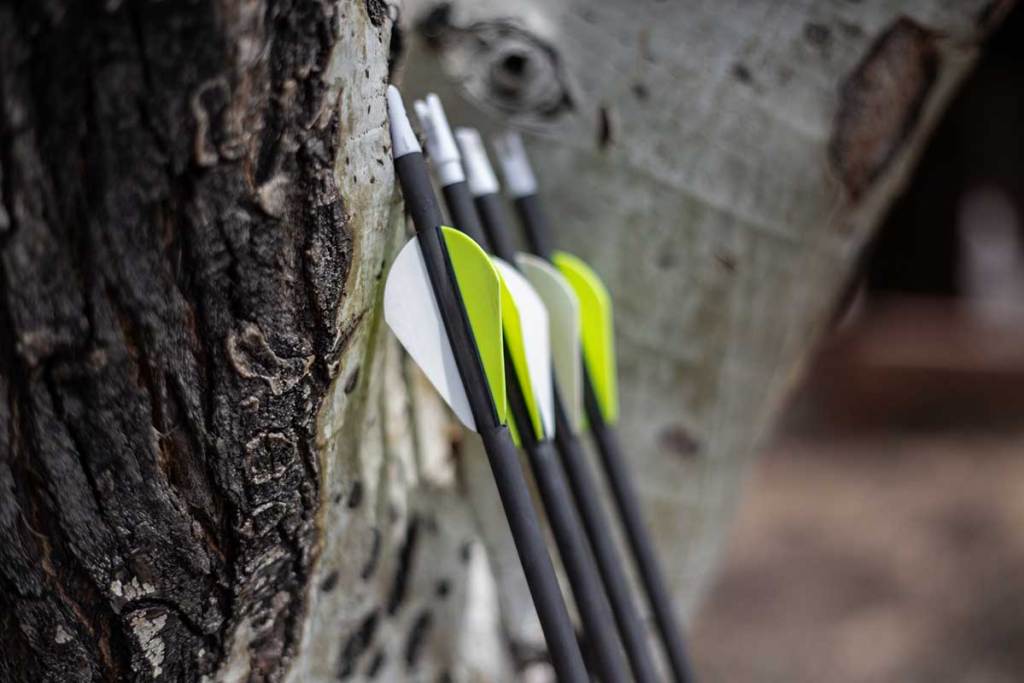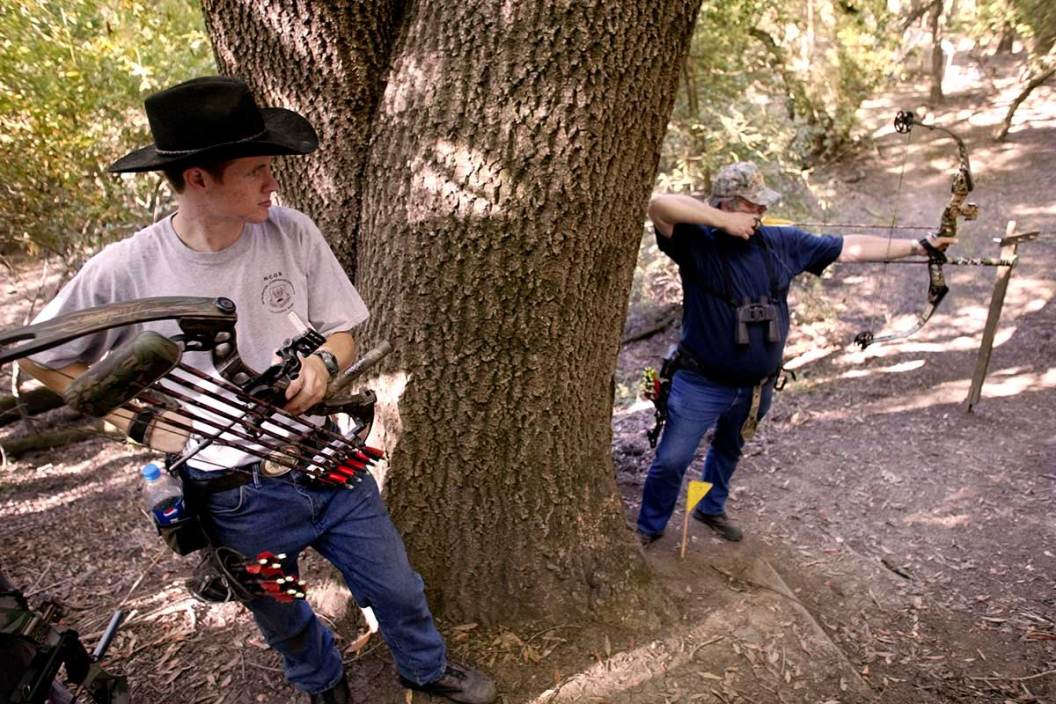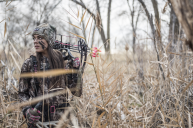You have finally received permission from your significant other to transform your backyard into the archery range of your dreams. Truth be told, there is a lot to think about before you start shooting at a homemade target, and we are here to help.
When it comes to building an archery range in your backyard, safety should be first and foremost. You'll want to check local laws, carefully lay out your range, and have the proper backstops and archery targets to shoot at. By checking these necessities off the list, you can ensure yourself a safe and fun atmosphere to practice in. Taking the proper steps to build your backyard archery range might seem tedious, but there's no excuse for not making it as safe as possible for you and those around you. If you are serious about your archery skills, be serious about your practice setup and create a safe atmosphere to get your training in.
Rules, Laws, and Neighbors

Andrea Kessler/Getty
Before you start anything, do your due diligence in checking into local and county regulations and laws that might restrict or forbid the creation of an archery range in your backyard. It might take some digging on your end, but make sure you find the information you need. This is one instance in which it's best to get permission first than to ask for forgiveness later, especially after you have put in so much work.
It's wise to check with your city or county code enforcement department. The police or town clerk's office is your next best option. They should be able to answer your questions and give you the go-ahead or nix your plan. You are out of luck if they do not allow it in your area, and will likely be required to go elsewhere for your bowhunting practice. If they allow it, your next step will be talking to and keeping open communication with your neighbors.
Depending on your situation, be it in a more rural area, town, or subdivision, be sure to discuss your plans with your neighbors and assure them that safety is your utmost concern. Tell them what you plan to do and keep that line of communication open. That is the best way to keep everyone on the same page and your backyard range operating successfully without your neighbors getting mad and calling authorities to complain.
Archery Range Layout

adogslifephoto/Getty
Once you have completed the formalities of knowing your backyard archery range is legal, now comes the fun part. You may have started doing this part already in your mind, but now is the time to implement your plans. Create a rough sketch and plan where and what you want to put into your archery range. Once you have the game plan, it is time to start measuring and figuring out precisely where everything should go.
The size of your yard will have a lot to do with what you can set up and how elaborate your archery range will be. At this point, it is best to say that you either need a decent amount of land or a well-fenced-in yard, preferably with a privacy fence. This will help ensure safety and avoid any issues with children or pets that could end up in your yard.
Start by orienting your range and where your shooting lanes might be. Be sure you'll only safely shoot in directions away from where people might congregate both in your yard and neighboring yards. Keep in mind the sun's direction, too. As most hunters are aware, the last thing you want is to have the sun blinding your shot, so planning for this will definitely help.
The next step is to measure out your yardage for where your targets will be located and where you will be shooting from. Plan accordingly, depending on the size of your yard and what you are preparing for. For competitive archers, this might be a single lane with different yardages to stand at. Hunters might have a single place to stand with several targets at different yardages. Do what works best for you and your situation.
If your yard is small, don't worry about forcing in longer distances. Instead, work with what you have and use smaller targets (or alter your bigger targets by putting two- or three-inch sticker targets on top). This will mimic longer ranges and force you to practice being more accurate.
Backstops and Targets

Your backstops will be one of the biggest safety protocols for your archery range. These go behind your targets and stop errant arrows from going where they should not. Many people use their wooden privacy fence, which is great if that's the only thing you have. But those fences are loud, destroy arrows, and may not always perform perfectly.
The best backstops are heavy but flexible and will absorb arrows instead of destroy them. There is even special archery netting that can be bought specifically for this purpose, and it's both safe and easy to use. Some versions, depending on the size, may be more expensive than others. You could also use layers of old carpet (which can be found for free or cheap at your local carpeting store), or even hay bales if you are in a rural area. The best option involves making wooden frames to hang rubber horse stall mats behind your targets. These do the best in terms of safety, protection, and keeping the integrity of your arrows.
When it comes to the actual targets, use what you have. It might be a single target, or perhaps you have a couple of them. Set them up however you want to meet your needs and work with what fits with your backyard range. If you are a hunter, invest in at least one 3D target of the game animal you hunt for. This will allow your practice to be as realistic as possible.
One good idea is to set up different targets at different ranges. That way, you can stand in the same spot and shoot multiple ranges, just like you would from a deer stand. The only negative to this is that you would need multiple backstops and can't just use one, which can get expensive and time consuming. Be creative with your target setups, but make sure that you have the proper backstops behind each target to ensure safety is the top priority. Once everything is safe, a custom archery range like this will surely make you a better shooter if you regularly use it.
Add to the Fun

When creating your backyard archery range, the possibilities are nearly limitless. Some will keep it basic because that's all they need or have room for. Others will go to the extreme and practically have a full 3D range in their backyard. Everyone will be different, but so much fun can be had in creating a safe archery range in the backyard.
If you are a hunter, add elevation to the range. That might include adding a small platform off the ground or setting up a treestand (don't forget the safety harness) in a backyard tree. Elevation adds to the realness of practice and creates more of a safety factor by shooting downward toward the ground. Some archers build something like an elevated porch platform, which is very comfortable to shoot from and adds a lot to your technique.
From there you can add bow stands, arrow holders, and even drink holders. The sky's the limit when creating your own backyard archery range. Make sure you go through the proper steps to ensure that safety is your number one priority when creating your own personal heaven on Earth!




